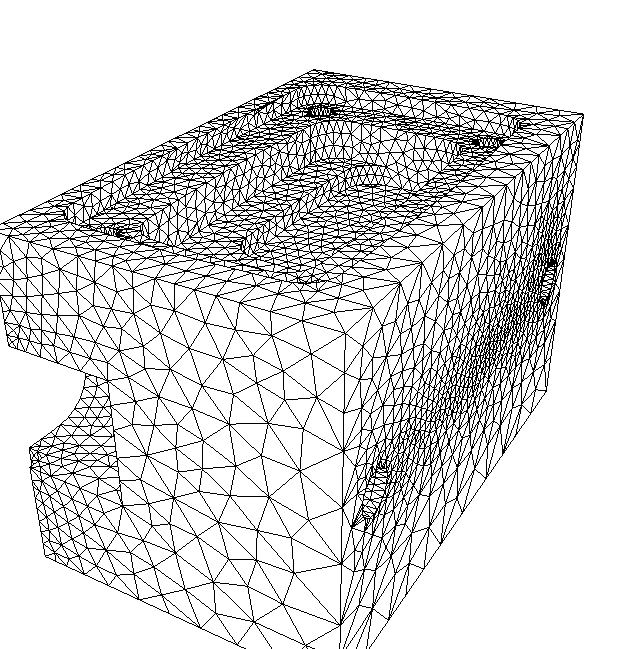Before I dive right into dislocations, let me provide a quick refresher on brittle fracture. From a theoretical perspective, crystalline materials are perfectly repeating spatial structures that lack any defects to disrupt their symmetry. These perfect structures should behave completely elastic, i.e. spring-like, until the onset of fracture due to bond breaking.
Prior to fracture the elastic regime of a crystal's response to loading can be described by anisotropic/isotropic version of Hooke's law : $\sigma_{ij} = C_{ijkl}\epsilon_{kl}$ where $\sigma_{ij}$ is the stress tensor, $\epsilon_{kl}$ is strain tensor, and $C_{ijkl}$ is the stiffness tensor. To describe what happens after the elastic region we require a model for immediate fracture, i.e. fracture occurring at the speed of sound in a material. This event is more commonly referred to as brittle fracture. The most simple model for near perfect brittle fracture is given by the Griffith's criteria. This criteria is based on the stress required to break all the bonds between two atomic planes in order to create a free surface. Typically, the Griffith's criteria is more generally discussed in terms of the stability of a crack with a given length, $l$. For tensile loading, the condition for fracture is given by the equation:
$$ \sigma_{fracture} = \sqrt{\frac{2 E \; \gamma}{\pi \;l}} $$
where $E$ is the Young's modulus , $\gamma$ the surface energy, and $l$ the surface (or crack) length. Therefore, a prototypical brittle material should fracture when $\sigma_{fracture} \leq \sigma_{applied}$. In most cases this is a poor approximation including brittle ceramics, which one might suspect would fit the criteria. The table below provides a few examples of calculated fractured stress for a 0.05 mm crack length of different materials.
| Material | $\sigma_{fracture}$[MPa] | E [GPa] | $\gamma$ [mJ/m$^2$] |
|---|---|---|---|
| Silicon |
51.6
|
169
|
1240
|
| Silica Glass |
17.2
|
75
|
310
|
| NaCl |
12.3
|
40
|
300
|
| MgO |
61.6
|
1200
|
249
|
| CaCO3 |
15.3
|
230
|
80
|
So why don't metals and engineered materials have brittle fracture characteristics, for example, gold. This is because nature (or man) introduces imperfections into materials that give rise to behavior which deviates from perfect elastic-to-brittle fracture, we call this plasticity meaning non-reversible/permanent deformation. One major contribution to plasticity are planar defects termed dislocations, these are extra atomic planes that are squeezed in between the parent crystal lattice. In the image below, an example of an edge dislocation is shown. The dislocation core occurs on the slip plane, i.e., the atomic plan where the dislocation can move about.
 |
Example of a line dislocation with the core marked by the perpendicular symbol. The dashed blue line indicates the slip plane, i.e., the plane for which the dislocation can glide along when a shear force is applied. Once the dislocation reaches a surface it generates a step. Not shown is the burgers vector (adapted from structuredatabase.wordpress.com).
|
One of the consequences of squeezing extra atomic planes in a host crystal, is the incipient strain/stress fields around dislocations and as a result of this, applying an external load provides enough energy for the dislocation to glide. Dislocations therefore have a mobility associated with them due to these strain/stress fields. This mobility occurs by glide motion along certain atomic planes with a given direction. This magnitude and direction is characterized by the Burgers vector, named after the Dutch physicist, Jan Burgers. For a closed-pack lattice, the magnitude of the Burgers vector along directions $h$,$k$,$l$ (see Miller indices notation post) can be calculated as:
$$ ||\mathbf{b}|| = \frac{a}{2}\sqrt{h^2+k^2+l^2}$$
In association with the Burgers vector is the Burgers circuit, which characterizes the vector magnitude and direction by comparing to a perfect crystal to a dislocation containing crystal.
A complete Burgers circuit for a perfect crystal (left) and the burgers circuit for edge (top-right) and screw (bottom-right) dislocations. As you can see the burgers vector is the extra segment that goes beyond the length of the perfect circuit (adapted from wikipedia)
|
A perfect example of plasticity induced by dislocations is when a piece of metal is subjected to a shear force. Rather than fracture, as prescribed by Griffith's criteria, dislocations will absorb the applied energy and subsequently move, thereby resulting in plastic or irreversible deformation. In the image shown below produced by Y.-T. Zhou et al. using HRTEM [2], the authors show nicely an edge dislocation in a MnS inclusion inside a steel matrix.
If you would like a more through background on brittle fracture and dislocation dynamics I suggest the text by W.D. Kingery et al. [3] and V. Bulatov and W. Cai [4], respectively. I particularly like the V. Bulatov and W. Cai book since it has excellent exercises to work on. There are also books by Hirth and Lothe and Hull and Bacon focused on introduction to dislocation theory. Now for the selected quote:
“You have to know something to learn something”
-W. David Kingery, father of modern ceramics, quoted by D. Uhlmann and P. Vandiver
References
[2] Y.-T. Zhou, et al., Philos. Mag. (2015). doi:10.1080/14786435.2015.1052030
[3] Computer Simulations of Dislocations, Oxford Series on Materials Modeling, 1st ed., V. Bulatov and W. Cai
[4] Introduction to Ceramics, Wiley-Interscience, 2nd ed.; W.D. Kingery, H.K. Bowen, D.R. Uhlmann
[3] Computer Simulations of Dislocations, Oxford Series on Materials Modeling, 1st ed., V. Bulatov and W. Cai
[4] Introduction to Ceramics, Wiley-Interscience, 2nd ed.; W.D. Kingery, H.K. Bowen, D.R. Uhlmann
Reuse and Attribution

